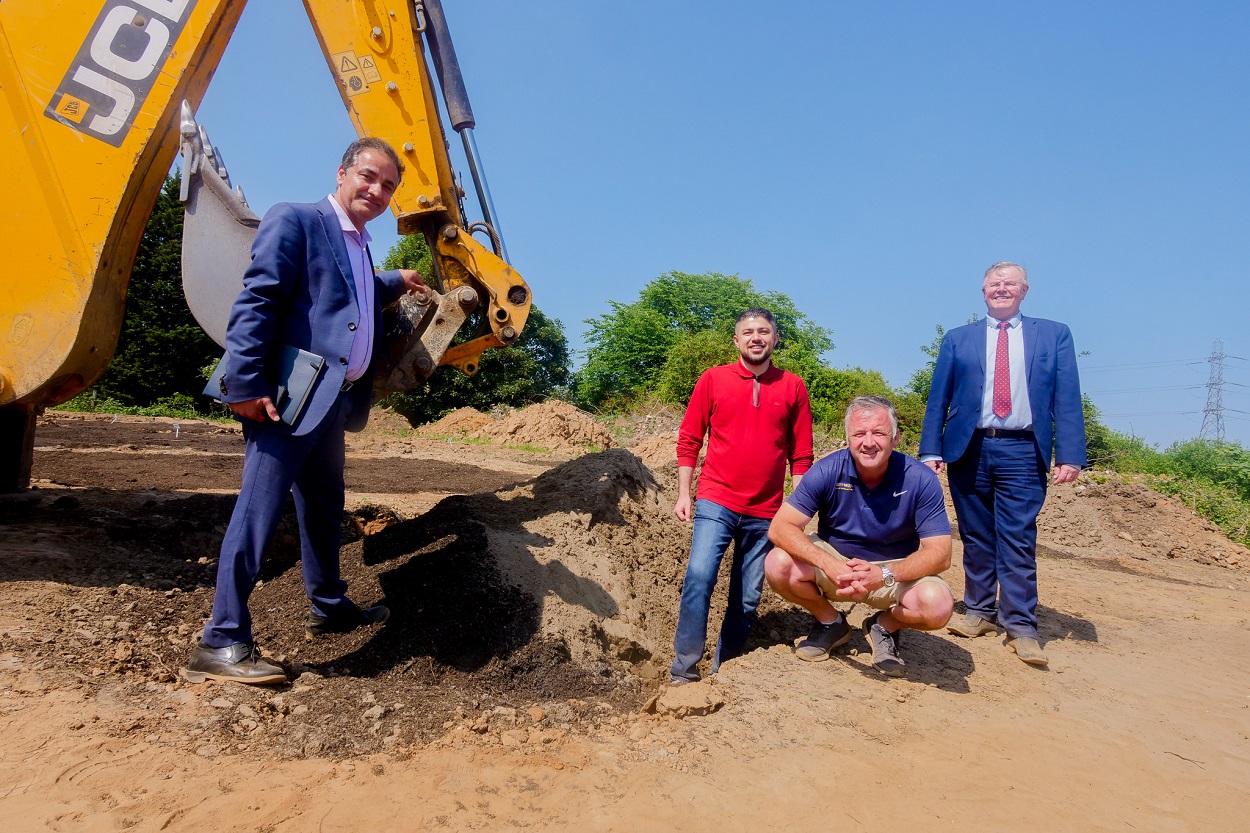The North East could dramatically reduce CO2 emissions by spreading blended clay on agricultural land, according to Teesside University scientists who are partnering with Scott Bros as part of a groundbreaking carbon sequestration study.
Writing in the Journal of Cleaner Production, the academics from the University’s School of Science, Engineering & Digital Technologies have calculated that applying a silicate clay-rich wastes (SCRW) at a rate of 11.2 tonnes per hectare could remove and store around 1.6 million tonnes of harmful carbon dioxide emissions from the atmosphere each year.
Recycling specialists Scott Bros is hosting the three-year research programme which seeks to identify which waste materials or blend of materials are optimum for carbon sequestration – the process which removes and stores the increased amounts of CO2 in our atmosphere to reverse global warming.
The blended SCRW is considered a rapid way of bypassing the natural weathering process involving silicate and carbonate rock which act as a natural control for climate change.
Rich in calcium and magnesium, both plant-essential nutrients, and with a particle size below 1.5 mm, the waste clay is ideally suited for the carbonation process, offering substantial sequestration potential.
Some geologists suggest the last two ice ages were triggered by an excess weathering or rocks due to tectonic collision. This caused the chemical reactions which absorbed higher levels of carbon dioxide, the compound that regulate the earth’s temperature.
Family-run Scott Bros donated the football field-sized site near Haverton Hill, Stockton-on-Tees, where it created 30 pits filled with a combination of waste clay, activated filter cake, recycled aggregate and compost.
The fine-grained SCRW is produced as a low value by-product of the firm’s two wash plants, the most recent of which represents a £6m investment in Teesside. They convert construction and excavation waste, which might otherwise go to landfill, into high-quality commercial sand and aggregate for the construction industry.
Scott Bros generates around 250,000 tonnes of SCRW per year, representing about 6.25 per cent of England’s total non-hazardous construction and demolition waste.
The research with Scott Bros is being conducted by doctoral researcher Mardin Abdalqadir under the supervision of Dr Sina Rezaei Gomari, Associate Professor of Research in Energy and Environmental Engineering.
The pair have written the paper, ‘Process-based life cycle assessment of waste clay for mineral carbonation and enhanced weathering: A case study for northeast England, UK ‘, together with Professor David Hughes and Ahmed Sidiq from Teesside University and Feysal Shifa from Scott Bros.
Mardin said: “The results indicate that the application of SCRW on agricultural land in North East England could capture a substantial portion of the region’s CO2 emissions, equivalent to a significant reduction in the UK’s total emissions.”
Dr Rezaei Gomari added: “To fully realise its potential, field-level investigations, robust monitoring systems, and comprehensive assessments are essential to understand its impact on soil properties, water management, and crop growth.
“This innovative approach emphasises the significant carbon capture potential of waste materials like SCRW compared to natural rock. It carries promising implications for cleaner production technologies and sustainable practices in agriculture.”
Scott Bros is also researching methods to convert the clay into ‘recycled’ bricks and has produced several prototypes, which have attracted interest from major UK housebuilders.
Peter Scott, a director at Scott Bros, added: “I’m confident that SCRWcan contribute towards achieving increased resource efficiency while playing a major role in mitigating climate change.
“Scott Bros is proud to be supporting this Teesside University research which is a promising step toward reducing carbon emissions and demonstrates the benefit of taking an innovative approach in the quest to create a more sustainable future.”
Fellow Scott Bros director, Bob Borthwick, added: “There were four million tonnes of non-hazardous construction and demolition waste in the UK that remained unrecycled in 2020. This study has the potential to completely turn that situation around and provide a huge boost to the circular economy.”
